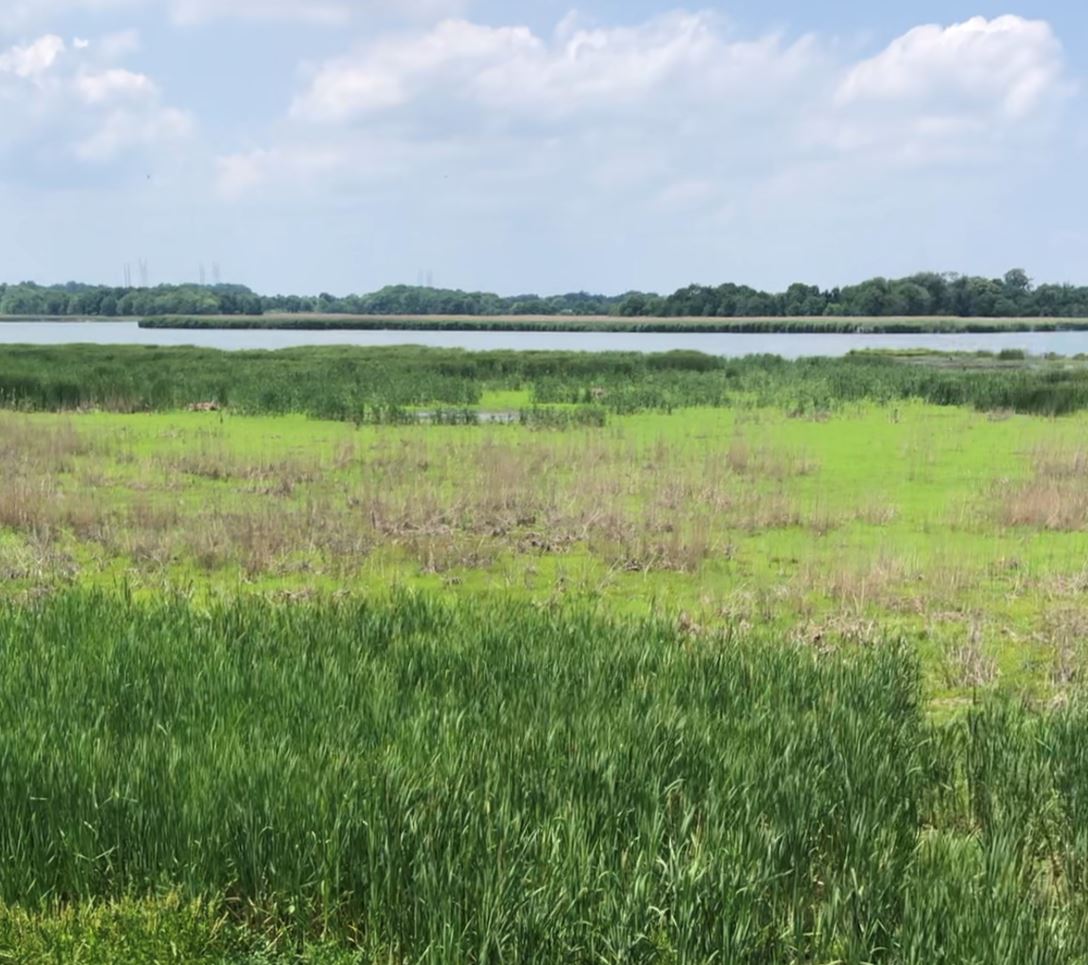by Melanie Cucunato
 There’s nothing more relaxing in summer than being outside and enjoying nature. Surrounded by fresh or salt water, or lush vegetation and forests, there are many places to find respite from the day-to-day grind in the First State.
There’s nothing more relaxing in summer than being outside and enjoying nature. Surrounded by fresh or salt water, or lush vegetation and forests, there are many places to find respite from the day-to-day grind in the First State.
Delaware is home to 34 very special nature oases – state Nature Preserves which total about 7,000 acres of land. From the steep slopes of the White Clay Creek Valley Nature Preserve to the sandy shoreline of Beach Plum Island, Delaware’s Nature Preserves offer unparalleled access to the beauty of nature.
The Preserves are managed by the Delaware Department of Natural Resources and Environmental Control. You can walk the trails, take in beautiful forest lands and view wildlife. But you can’t camp in them – they are not your typical state parks – but rather places where landowners wanted to preserve the state’s natural resources for future generations. Our Nature Preserves are largely unspoiled and meant to stay that way. However, like in all of our state parks, you must leave no trace.
Outdoor Delaware is highlighting three of the most spectacular nature preserves, one in each county. Not all 34 state Nature Preserves are open to the public, so you should check the list and rules before you go.
Located near Middletown, this is a birder’s paradise thanks to a single vantage point near Port Penn. An accessible, DNREC-built viewing platform gives you a 360-degree view of one of the state’s largest freshwater marshes.
Part of the Augustine Wildlife area managed by the DNREC Division of Fish and Wildlife, you’ll need a Conservation Access Pass to visit. Parking is located off Port Penn Road and Thorntown Road.
At 163.879 acres, Thousand Acre marsh is one of the state’s largest freshwater marshes. It is an outstanding Natural Area that is highly attractive to waterfowl, with a rich history of muskrat and waterfowl hunting and trapping.
The preserve mainly exists to protect the freshwater marsh and provide habitat for waterfowl. But there’s a million-dollar view from the platform that you don’t want to miss.
 If you’re looking for a walk through a mature forest, the Fork Branch Nature Preserve is the place to be. Located in Dover, off Kenton Road, Fork Branch is the only state Nature Preserve located within city limits in Delaware.
If you’re looking for a walk through a mature forest, the Fork Branch Nature Preserve is the place to be. Located in Dover, off Kenton Road, Fork Branch is the only state Nature Preserve located within city limits in Delaware.
This 302-acre preserve features a one-mile loop trail through mature forests, wetlands and the Fork Branch stream. You can access the trail via the parking lot.
The largest parcel of the Fork Branch Nature Preserve was donated by the McClements Family in 2004 and is known as the Anne McClements Woodlands. Studies within the woodlands show several rare and uncommon beetle species, many of which are indicators of high-quality, mature deciduous forests with ample dead tree habitat.
The Fork Branch Nature Preserve is registered with the Old Growth Forest Network, the only national network in the U.S. of protected, old-growth, native forests where people of all generations can experience biodiversity and the beauty of nature.
This 127-acre Preserve is a small barrier beach of exceptional quality. Dedicated in 1990, it is located near Broadkill Beach. Managed by the DNREC Division of Parks and Recreation, parking is found at the southern end of South Bayshore Drive and subject to the current Delaware State Parks fee.
Beach Plum Island Nature Preserve was established to protect and maintain the barrier spit, its plant and animal life and its unaltered geological processes. The barrier spit ecosystem at Beach Plum Island, encompassing beach, dune, tidal marsh and riverine habitats, is a dynamic system that is susceptible to damage caused by unregulated human activity.
Dunes and the vegetation that are integral in their creation and persistence, are extremely susceptible to damage from trampling by humans. Visitors are allowed on certain portions of the preserve and can only use only those areas designated for activities like wildlife watching and surf fishing.
Access to the southern portion of the beach is restricted to the public due to beach nesting birds and migratory shorebirds, but you can visit the beach and surf fish in the areas open to the public. These recreational activities are subject to the enforcement policies by the Division of Parks and Recreation and the land restrictions that were placed on the parcel.
No matter where you are, there is a preserve near you. So get outside and enjoy what these, and the other state Nature Preserves in Delaware have to offer for nature lovers.
Melanie Cucunato is Natural Heritage Program Manager with the DNREC Division of Parks and Recreation.
Related Topics: adventure, conservation, education, natural areas, nature, nature preserves, outdoors and recreation, parks, recreation, science